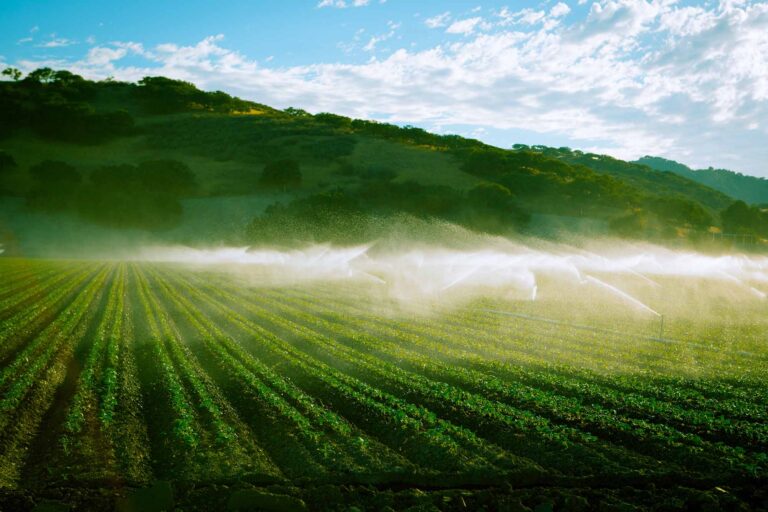With limited resources and an ever-increasing population, traditional farming practices can no longer support a sustainable food system.
Fortunately, the current technological advances in machine learning offer a promising path toward more sustainable agricultural practices. By leveraging computer vision and predictive analytics, farmers can reduce water usage, control pests with fewer resources, and optimize fertilizer usage to lessen their negative environmental impact. In this article, we will explore the environmental benefits of using machine learning in agriculture and how it can help achieve more sustainable farming.
An overview of challenges agriculture is facing today
One of the major challenges facing agriculture today is the increasing demand for food to feed a growing population that will reach 9.7 billion people by 2050,according to IMF. Given that agricultural land is already stretched to its limits, there is an urgent need to find new and more efficient ways to produce food while preserving and protecting the environment. Climate change is also a major threat, with extreme weather conditions such as floods, droughts, and storms causing widespread damage to crops and livestock. Finally, there is the challenge of dwindling natural resources like water and soil fertility, exacerbated by unsustainable farming practices.
Reducing water usage
Traditional farming often consumes excessive amounts of water, and this has had a devastating impact on the environment. For instance, decades of over-irrigation in California’s Central Valley have caused hazardous levels of salt accumulation in the soil and made certain areas incapable of growing crops. In other parts of the world, such as India and China, farmers have resorted to over-pumping groundwater that is not replenished quickly enough, leading to water shortages and degraded soil.
In addition to causing natural resources like water and soil to be depleted, excessive water usage also has an economic impact. Farmers are often forced to pay high prices for irrigation systems or use inefficient methods that require a lot of water with minimal yields.
With ML-enabled remote sensing technology in place, farmers can monitor soil moisture levels or set up automated sensors that detect when crops need additional water. These strategies can help make water usage more efficient, reduce overall farming costs, and ensure that natural resources are not wasted. In addition, machine learning can be used to detect drought-resistant crops and find optimal planting patterns based on soil type and climate conditions. All of these measures can help make agricultural production more sustainable in the long run.
Optimizing pesticides usage
Pests are a major problem for most farmers, as they can cause considerable damage to crops and significantly reduce yields. Traditional solutions to this problem involve the use of pesticides which have negative environmental impacts and are not considered sustainable.
Machine learning presents an alternative solution that enables farmers to better monitor and control pests with fewer resources. By leveraging computer vision and predictive analytics, farmers can automatically detect pests and monitor crops in real-time. This allows them to take an effective, targeted approach to pest control and dramatically reduce reliance on pesticides. Additionally, machine learning algorithms can be used to monitor water levels and soil conditions, which enables farmers to accurately determine when pests are most likely to appear and take preventive measures.
Optimizing fertilizer usage
While extremely beneficial to crop yields, the use of synthetic fertilizers in agriculture is detrimental to our environment. In general, most farmers apply synthetic fertilizers equally to the whole field, meaning that in areas where the soil already has a high nutrient content, fertilization is applied excessively. This often causes nutrients to overflow into the nearest rivers, lakes, and oceans, which causes algae to bloom excessively. This, in turn, significantly decreases the oxygen levels in the water and can cause fish and other aquatic organisms to die.
Moreover, fertilizers often cause soil acidification, which can negatively impact biodiversity. What’s even more daunting, the production of synthetic fertilizers is also the cause of 2.1% of annual CO2 emissions, according to a recent study by the Greenpeace Research Laboratories.
Machine learning can help lessen the negative environmental impact associated with these practices. By using precision agriculture techniques such as automated data collection and analysis, farmers can monitor soil conditions in real-time and apply fertilizer only where it’s needed and in optimal amounts. This helps reduce nutrient overflow into rivers and lakes and promote a healthier aquatic ecosystem and preserving biodiversity.
Machine learning to the agriculture’s rescue
It is clear that machine learning has the potential to revolutionize agriculture and make it more sustainable. By leveraging automated technologies such as computer vision and predictive analytics, farmers can conserve natural resources while boosting crop yields. This can help reduce the negative environmental impact caused by traditional farming practices, including water usage, pesticide usage, and fertilizer usage.
As machine learning technologies become more advanced and mainstream, there is no doubt that these methods will become a staple in the agricultural industry. Ultimately, through the help of modern technology, we can ensure better administer our planet’s natural resources and create a more sustainable future for generations to come.
About the Author
Nina Matusevich is digital marketing executive at Itransition. Itransition is a custom software development company headquartered in Denver, Colorado. With more than 20 years of experience, it delivers a full spectrum of software consulting and development services, handling projects of any scale for SMBs and Fortune 500 companies from various sectors.
Source: Tech Native

